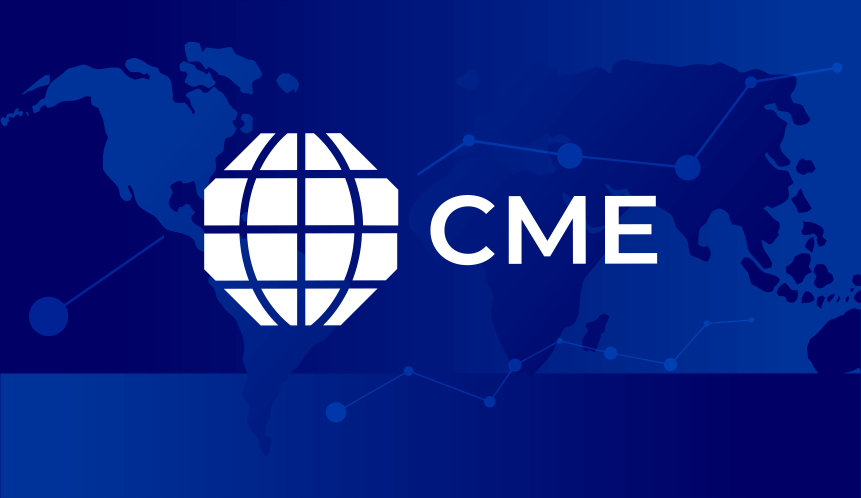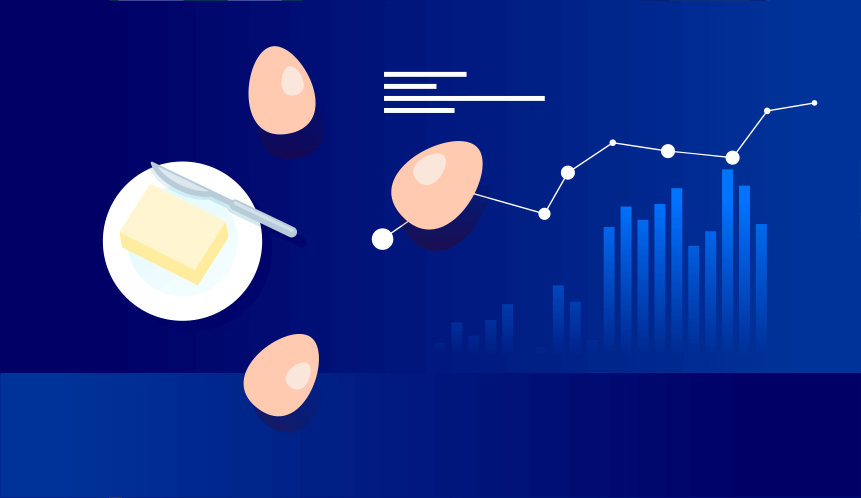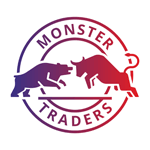
The bigger a marketplace is, the more opportunities it offers to a trader. Almost every trader, who started his or her career in the Forex market and learned the ropes of the profession, aspires to enter the vast space of global trading — and trade at one of those huge exchanges that control world prices and affect macroeconomic processes. Are you tempted by the world-known trading platforms, where the wolves make millions?
There are about two hundred large exchanges in the world — they are stock, currency and commodity exchanges. They are located in American, European and Asian financial centers. Traders are free to choose the options they like best — some are focused on trading stocks, some prefer currency exchanges and some are drawn by the prospects of managing various assets: commodities, metals, energy products, currencies, interest rates or indices… CME Group, or Chicago Mercantile Exchange Group — the largest trading platform in the USA — offers traders these opportunities (the name of the exchange is often shortened to CME or Chicago Mercantile Exchange).
Would you like to know how and what they trade at the CME and how the Chicago Exchange took the lead?
In this article:
Part 2. The history of CME Group
2.1 The origin of futures trading in Chicago
2.2 From butter and eggs to indices. Growth of the CME and the CBOT in the 20th and 21st centuries
2.3 The results of NYMEX and COMEX acquisition
3.2 What they trade at the CME
Part 1. What is the CME

CME Group includes four Chicago and New York exchanges that form a combined marketplace. At the core of the group are the old Chicago exchanges founded in the 19th century: the CBOT (Chicago Board of Trade) and the CME (Chicago Mercantile Exchange) — the whole group was named after the latter.
Today, CME Group is a giant marketplace that provides both classic open outcry and electronic trading opportunities allowing traders from all over the world to join in.
Several factors can be accounted for CME Group taking the lead among other mercantile exchanges. The history of the group dates back to the industrial boom in Chicago — the city that became one of the main American transportation hubs in the 19th century. The city’s favorable location played a huge role in attracting capital, but it was not the only reason for the company’s success. What made CME Group the leading exchange was its capability to not only sustain trading but also determine development trends of the latter. Exchanges that eventually became a part of CME Group were at the front lines of futures trading: they standardized contracts, enhanced reliability of transactions and introduced the latest technologies of trading information processing.
Many people think that trading is a modern invention. But in fact, everything traders use at the CME today is the result of almost two hundred years of development. Strength and reliability of CME Group are rooted in its history. Before we turn to the topic of modern trading at the Chicago Exchange, let us learn about the stages of its development — this will give us a thorough understanding of what a mercantile exchange is and how this form of global trading came into existence.
Part 2. The history of CME Group

The first of the exchanges that merged into CME Group in the 21st century was the Chicago Board of Trade (CBOT). It was founded in 1848 and it specialized in trading grain.
At that period, Chicago was a young, rapidly developing city. It had been only 9 years since the day Chicago was granted the City status in 1837. Its geographical position was highly advantageous: Chicago happened to be at the intersection of the western and eastern transport routes in the USA. The city’s population was growing and productions were expanding. This created favorable conditions for the Chicago Board of Trade: the exchange was rolling in grain that was flowing toward the new transportation hub of the country.
2.1. The origin of futures trading in Chicago
For the first fifteen years, the Chicago Board of Trade had been trading «nature’s gifts» — the new crop. What’s interesting is that futures transactions had already been introduced to global exchange trading by that time. They first appeared in the Netherlands back in the 17th century. For instance, during the infamous tulip mania traders signed contracts for the delivery of tulip bulbs that were yet to be grown.
With the development of exchange trading in the US, local traders started using this instrument as well. The Chicago Board of Trade first introduced futures contracts in 1864 (or in 1865, according to other sources). This represented the breakthrough in the exchange operations: the CBOT evolved from being a trade center for grain producers and buyers into the source of income for traders who were interested not in the product itself, but in the prospects of its resale. Operations with futures contracts at the CBOT brought fortunes to people, who had never been engaged in farming or keen on buying, storing, transporting and processing grain. In modern terms, transactions became virtual (not all, but most of them). This was an important step toward making the CBOT a modern trading platform, where money makes money.
After all, what are futures? It is a financial instrument in the form of a contract between a seller and a buyer for the delivery of goods at a fixed price. The goods themselves might yet be nonexistent (for example, when selling grain from a future crop). However, the seller is obliged to deliver the goods by a certain date, and the buyer agrees to pay the price that was agreed upon at the time the contract was concluded. The contract stipulates purchase quantity, the date and the place of delivery, the quality of the goods and the price. So, it is rather obvious why the name of these contracts comes from the word «future».
This way the seller can comfortably produce the goods (let’s say, sowing a 200-acre field) knowing that they already have the buyer. And the buyer, on the other hand, is protected from price fluctuations in the market.
Initially, futures and options were intended for mitigating the risks of both the buyer and the seller of certain goods. But as it turned out, both of these financial instruments (derivatives) also allow for making profits from market price fluctuations. After all, the most attractive feature of a futures contract that gained this instrument such popularity among speculative traders is the opportunity of resale (up to the end date of delivery). There is a space for intermediary profits, and, on a global scale, futures contracts are becoming an instrument that affects the market pricing.
From the moment the CBOT started operating futures, professional speculators — i.e. traders — began flocking to the market. Unfortunately, the word «speculation» is often given a negative connotation for a number of historical reasons, but this stereotype should be eradicated. This type of trading turned out to be beneficial for economic growth: it provided a powerful impetus for the development of exchanges. Trading at the Chicago Board of Trade was given a boost and started gaining momentum.
Eventually, there were 5, 10, 100 resales for each transaction that ended in the actual sale of goods. Today, people still sell and purchase real goods at the Chicago Mercantile Exchange, but 98% of transactions here are resale.
You don’t have to produce or sell real goods or charter ships and build storages to work at the CME. And this type of trading was made possible in 1864.
2.2. From butter and eggs to indices. Growth of the CME and CBOT in the 20th and 21st centuries

So, the Chicago Board of Trade, one of the predecessors of CME Group began its operations in 1848. And in 1898 Chicago welcomed a new large exchange — the Chicago Mercantile Exchange (CME) that later gave its name to the joint marketplace. It specialized in trading dairy products and eggs and initially, it was called The Chicago Butter and Egg Board. And just like the CBOT, it eventually turned its attention to futures contracts.
The formation of the CME was driven by the rapid development of Chicago. After the Great Chicago Fire had destroyed almost the entire city in 1871, the construction and industrial boom began. The first skyscraper in the world was built here, in Chicago, in 1885. People were building factories, warehouses, educational institutions (including the University of Chicago) and transport routes in the city. By 1890, Chicago — that was about half a century old at the time — had become the second most populous city in the US. While in 1833 (before Chicago was granted the City status) its population was 350 people, in 1890 it grew to over a million people! One of the significant events for the city was the World’s Columbian Exposition in 1893 that was visited by… 27 million people!
These conditions contributed to the creation of another Chicago exchange — the Chicago Mercantile Exchange that started active dairy product and egg trading.
In the 20th century, both Chicago exchanges made the revolutionary transition to trading assets outside the agricultural production.
Turning points in the group’s history:
- In 1969, the CBOT began trading silver — its first non-agricultural futures.
- In 1972, the CME introduced purely financial futures — currencies.
- In 1975, the CBOT started trading futures contracts of the US Department of the Treasury.
- In 1981, the CME welcomed Eurodollar futures that have since become one of the major currency pairs.
- In 1983, they began to use crude oil futures, and this commodity has turned into one of the most liquid assets.
- In 1997, traders at the CME started trading the first e-mini futures contracts — E-mini Nasdaq-100. The same year, the CBOT introduced contracts based on the Dow Jones Industrial Average for industrial sector stocks.
- In 2006, the CBOT offered traders electronic agricultural futures, in keeping with the digital transformations in the world.
In addition to the introduction of new assets, both Chicago exchanges have been working on improving trading instruments. In the 1970s, there was a major event, the importance of which can be compared to the introduction of futures contracts: exchange traders began the extensive use of derivatives called options. This trading instrument, used in parallel with futures, can be viewed as an insurance policy that gives buyers the right to purchase or sell a futures contract, without obliging them to do so. Therefore, it is not the product that is purchased, but the right to purchase it. Exchange trading becomes even more virtualized, moving away from selling «nature’s gifts». The Chicago Board of Trade began trading options in 1982.
In 1992, exchange trading entered a new phase: the Globex platform opened the door for electronic trading. It could not have been otherwise, because civilization had entered the Internet era, and the CME needed to respond to the information revolution challenges with timely conquest of the virtual financial space. A new era for traders had begun: due to the growth of the Internet, exchange assets trading was becoming increasingly available to the general public with each passing year. Working on a noisy trading floor became optional. At the heart of CME’s modern opportunity to trade online from anywhere in the world was the innovative breakthrough of 1992.
Another important milestone was reached in 2002: The CME became the first exchange in the USA to issue its own shares (IPO). Three years later, in 2005, the CBOT, too, presented its shares to the market.
That’s how, competing and trying to outdo each other in launching new assets and financial instruments, developed the two Chicago «sisters». Over time, the companies started considering merging and joining their efforts, which promised a synergistic breakthrough. The first step in this direction was taken in 2003: the CME/CBOT’s clearing system was launched and, thus, the financial interaction between the exchanges began. Four years later, in 2007, the two Chicago exchanges merged into CME Group.
This merger gave a new impetus to the development of the Chicago Mercantile Exchange. And in 2008, CME Group acquired two New York exchanges — the NYMEX and the COMEX — thus, taking its current form.
2.3. The results of NYMEX and COMEX acquisition

To assess the scale of the modern CME Group, we should look at the history of the New York commodity exchanges that have joined this exchange platform.
The NYMEX mercantile exchange was created in New York in 1882. It specialized in butter and cheese trading. Just like its Chicago cousins, the NYMEX gradually turned to trade some non-agricultural assets. In 1956, this exchange introduced platinum futures contracts — the NYMEX was the first company among the exchanges, which later merged into CME Group, to bring this element into the range of exchange assets.
The COMEX originated from several niche mercantile exchanges in 1933. The COMEX was formed from the National Metal Exchange, the Rubber Exchange of New York, the National Raw Silk Exchange, and the New York Hide Exchange.
So, the COMEX, unlike the three other exchanges in the CME Group merger, started off by trading industrial goods, not agricultural. But the era of niche exchanges was coming to an end. The COMEX, too, started trading new assets. And in 1972, it started trading gold futures, thus being the first among the future CME Group exchanges to do so.
The NYMEX and the COMEX merged in 1994, and in 2008, they joined Chicago’s CME Group.
As you can see, the history of CME Group is the history of globalization and trade expansion. It is the consistent development from specialized mercantile exchanges, which traded one or several types of agricultural or industrial products, to a diverse marketplace that provides traders with the opportunity to operate a wide range of assets: raw materials, energy products, agricultural products, precious metals, and currency. The range of assets in CME Group continues to expand. In 2017, cryptocurrency futures had become available to traders. And there is no doubt that CME Group will continue to introduce other innovative assets in response to the development of the world economy.
CME Group is a global marketplace, that
- keeps pace with the times,
- introduces modern assets,
- opens up broader horizons for traders,
- and has enormous potential for development.
Part 3. CME Group today

Today, Chicago is one of the major financial centers of the USA. It’s not just CME Group, there is also a Federal Reserve Bank here and a number of other influential financial institutions. The central business district of the city, called Chicago Loop, is the second largest after Manhattan’s. This area houses headquarters of some of the largest corporations — Boeing, United Airlines, etc.
And here, in a Chicago Loop skyscraper, next to the regional Reserve Bank and other major institutions, we can find the CME Group headquarters.
This skyscraper was built in 1930 by Holabird & Root and is considered one of the main attractions in Chicago’s commercial district. Its height is 185 meters (for a time, it was the tallest building in Chicago). The magnificence of this architectural project represented the monumental scope of exchange trading before the Great Depression (then again, the skyscraper was put in place after the shadow of the crisis had already started crawling over America). The Art Deco skyscraper looks very impressive, with its shiny surfaces and beautiful marble lobbies. The building has become one of the architectural centerpieces in the commercial district, and the visual anchor of LaSalle Street — Chicago’s «Wall Street». Later, it was repeatedly expanded as trading in Chicago gained traction.
And this is where — to this magnificent building — moved the Chicago Board of Trade (CBOT). The architectural grandeur of the building reflected the financial power of this organization. The skyscraper was crowned with a shining 9-meter aluminum statue of the goddess Ceres. Aluminum was very popular at the time; it symbolized growth, the desire to build a future and adaptability to the latest trends. The statue of Ceres itself symbolized the agricultural specialization of the Chicago Board of Trade and its wealth and prosperity.
After the CBOT and CME merger, the skyscraper became the CME Group headquarters. Despite the fact that today this exchange trades a wide variety of assets, the building is still crowned with the statue of Ceres, which serves as a reminder of the CME Group history and as a symbol of prosperity.
The group’s headquarters with a trading floor is located at 20 South Wacker Drive, Chicago, Illinois 60606. CME Group’s 5500 square-meter trading floor, where open-outcry trading takes place, is located here as well. The noise here used to be so loud that traders had to develop their own sign language. Nowadays, only a small percentage of transactions is executed on the CME Group trading floor. Over 95% of transactions are now settled via the Globex platform. So it is not necessary to go to Chicago if you want to trade — you can trade via the Internet.
Globex electronic trading is carried on virtually around the clock: 23 hours every business day, with a one-hour break.
The impact of CME Group has long crossed the borders of not only Chicago but also of the USA. CME Group has regional offices in several cities in the US and five other countries. They are located in Washington, New York, Houston (USA), London (UK), Tokyo (Japan), Sydney (Australia), Singapore and Hong Kong.
3.1. Who trades at the CME
The Chicago Mercantile Exchange is a meeting place for millions of market participants — from individuals to giant corporations. Both farmers and large commodity companies, including international ones, execute contracts on the CME Group platform. Even more, traders go into trading not to sell or purchase a particular product, but to mitigate risks through diversification of assets and to make money on price fluctuations. These are investment and commercial banks, hedge funds, pension funds, and financial advisors.
There are also independent traders at the exchange — single players, individuals. Thanks to the Internet, they are continuously growing in number. These are both young and mature people, both men and women (more than a quarter of traders in the US today are of the fair sex). There are no special restrictions for private traders — you only need to have a certain deposit amount, understand the essence of exchange trading and have the desire to trade.
Access to the trading platform can be provided by a broker. You can confirm the broker’s reliability on the CME Group or NFA websites (the US National Futures Association).
To open an account with a broker, you will not need a lot of documents. For example, a Russian citizen will only need a regular passport.
So it is fair to say that the Chicago Mercantile Exchange is a welcoming place, where people can start trading…
- staying within their budget;
- following a personal strategy;
- and using assets of their choice — and there are over seventy to choose from at the CME.
3.2. What they trade at the CME
Now, after learning the CME Group history, you know that trading was moving from niche specializations toward a wide range of diverse assets. During the 20th century, the exchange was continuously expanding the range of goods that can be traded in futures contracts. Today traders at the CME operate the most valuable and liquid assets in the world — from raw materials and energy sources to currencies and precious metals. Moreover, for risk diversification, traders use futures contracts for industrial indices, interest rates, and other complex financial assets.
Major asset classes represented at the Chicago Mercantile Exchange:
- Agricultural products. Just like a century and a half ago, people need wheat and rice, corn and soybeans, coffee and cocoa, sugar and cotton, meat and butter. The CME still offers a wide choice of traditional agricultural assets.
- Metals. There are futures and options for both base and precious metals — gold, platinum, and silver. Some players hedge price risks using these contracts, others consider precious metals a good long-term investment. Centuries have passed, but the most liquid asset in this category is still gold.
- Energy products. Oil, gas, coal and various types of fuel are highly liquid assets; this fact reflects the important role of these resources in the world economy. The most liquid asset in this category is oil.
- Currencies. The CME features about twenty currencies of developed countries, including the Dollar (US, Canadian and Australian), Euro, Yen, Yuan, and since 2017 — Bitcoin. Although this marketplace is not a currency exchange, it is the second largest electronic currency market on the planet. Two assets from this class — the Euro and the Yen — are among the most liquid assets at the CME.
- Equity indices. These are derivative financial instruments that show very high liquidity (the S&P 500 equity index is the leader in terms of liquidity at the CME). These indices indicate the state of the industries and the economy (for instance, the afore-mentioned S&P 500 index includes 400 industrial corporations and 100 financial, public utility and transport corporations). Today, the Chicago Mercantile Exchange is the world’s leading platform for trading American, European and Asian index futures and options. On a related note, the famous Dow Jones Index belongs to CME Group.
- Interest rates. This class includes interest rate swap, Eurodollar, credit default swap and US Treasury bond futures. By the way, the US debt obligations, which fall into the category of conservative and low-risk investment instruments, demonstrate excellent liquidity. For example, a ten-year Treasury bond futures contract is one of the most liquid assets at the CME.
- Alternative investment instruments. If you want, you can make money by forecasting price fluctuations in the real estate market or even… by forecasting weather. Snowfalls, hurricanes and temperature fluctuations carry a certain risk for the economy, and the exchange offers even weather futures.
3.3. How they trade at the CME
The essence of futures trading is in the changes in demand and supply that send prices for certain assets either up, or down. The method traders use to make money can be explained in several simple formulas:
- buy low (when the asset price is at the bottom), sell high (when the price is reaching its peak);
- and vice versa — sell high and buy low;
- and since one might have to wait for highs and lows a long time, traders also trade by identifying support and resistance levels forming within highs and lows.
But the economic role of the giant that is the Chicago Mercantile Exchange should not be viewed as banal speculation. In the trading process, players, especially the major ones, influence the market pricing, thus making the CME one of the regulators of macroeconomics.
Each trader contributes, even if just a little bit, to the market behavior. (By the way, the microscopic impacts of small players, from time to time, turn into powerful trading waves — creating a bandwagon effect.) Market behavior is also influenced by economic, political and other factors.
How does this colossal trading mechanism work?
- Open outcry trading. Trading classics — open outcry system. This was the way people traded in 1848 when the CBOT was founded in Chicago. Now the CME Group skyscraper, or rather its giant trading floor, attracts traders who gather five times a week to experience classic trading. The floor is divided into zones according to product categories; these zones are called trading pits. Bidders name assets and the desired selling or purchase price. However, the trading floor now is not as crowded and noisy as before.
Open outcry system was seriously sidelined by modern technologies. Trading areas are surrounded by booths with monitors, and the trading pits have long been using screens, instead of boards and chalk, to display price fluctuations. And the vast majority of traders have never seen a trading floor.
- Electronic trading. It is a modern tool used by the absolute majority of traders. Electronic trading at the Chicago Mercantile Exchange is provided by the Globex system since 1992. It is an electronic trading platform connected to the Internet. As we mentioned before, independent traders can get access to CME Globex through brokers.
The dominance of electronic trading over an open-outcry system is attributable to numerous advantages of Globex:
- immediate reaction (thanks to which, among other things, such trading style as scalping is now possible);
- opportunity to see price fluctuations on virtual charts and use various analytical tools and indicators;
- extended package of exchange assets;
- opportunity to trade via the Internet, even from the other side of the planet.
It is thanks to CME Globex that independent traders from all continents, who have never been to Chicago, can join the exchange trade. If you wish to become a trader, you can find your way to the Chicago Mercantile Exchange without a plane — just make a few clicks!
